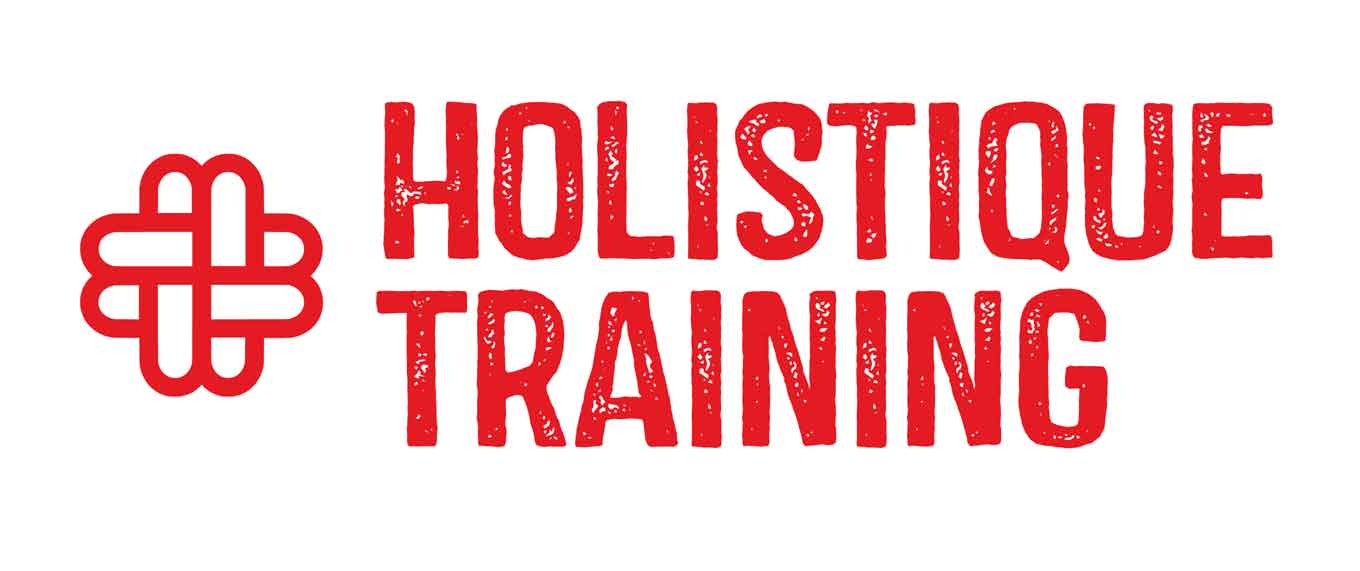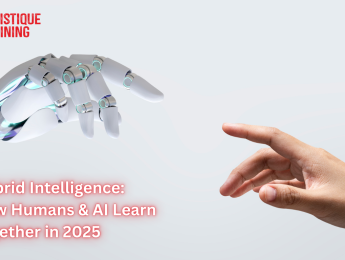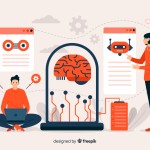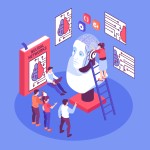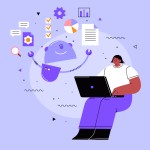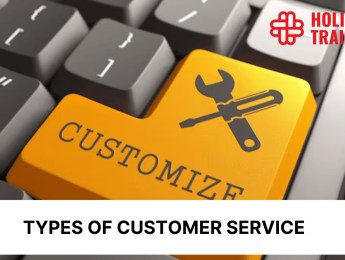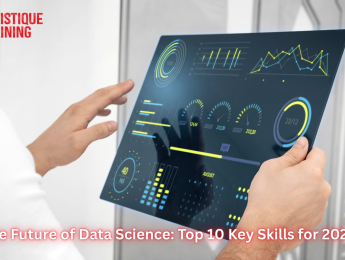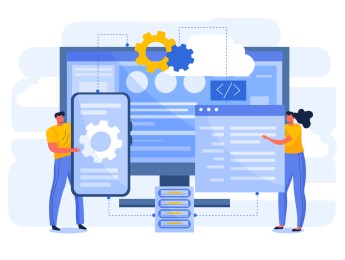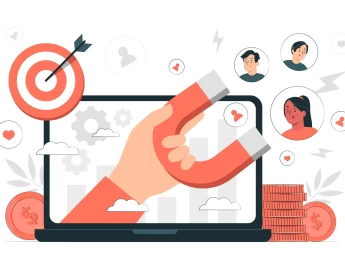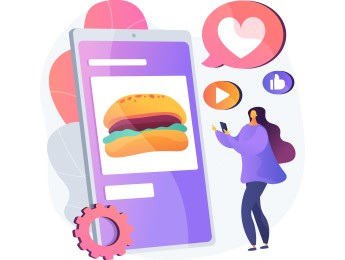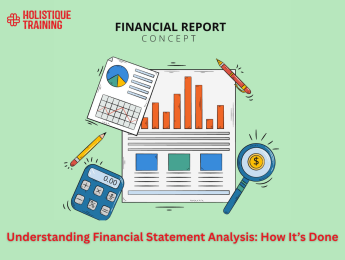- Table of Contents
- 1. Introduction
- 2. What is Hybrid Intelligence?
- 3. The Coevolution of Humans and AI
- 4. Learning in the Era of Hybrid Intelligence
- 5. Applications of Human–AI Collaboration
- 6. Ethical and Social Implications
- 7. Challenges of Hybrid Intelligence
- 8. Future Directions and Opportunities
- 9. Empowering Yourself: The Course That Prepares You for the Hybrid Era
- 10. Conclusion
1. Introduction
The term hybrid intelligence refers to the seamless collaboration between human cognition and artificial intelligence (AI) to achieve outcomes neither could accomplish alone. Unlike the early days of automation, where machines replaced manual tasks, hybrid intelligence seeks to augment human abilities rather than replace them.
By 2025, hybrid intelligence has become a central concept in technology and society. Rapid advances in AI, combined with increasing demands for creativity, empathy, and critical thinking, have created an environment where the strengths of humans and machines can complement each other.
Historically, the relationship between humans and machines evolved through several phases: mechanisation in the industrial revolution, automation in the 20th century, and now intelligent augmentation. From simple calculators to today’s large language models, we have come a long way in redefining work and learning.
2. What is Hybrid Intelligence?
Hybrid intelligence differs fundamentally from purely human intelligence and purely artificial intelligence, both in nature and in purpose. While human intelligence is grounded in intuition, emotion, and context-awareness, and artificial intelligence excels at processing vast amounts of data with speed and precision, hybrid intelligence is the purposeful integration of both. It represents a synergistic partnership, where human insight, ethics, creativity, and social awareness complement AI’s computational power, pattern recognition, and scalability.
In this model, humans contribute qualities that are difficult, if not impossible, for machines to replicate — such as moral reasoning, empathy, and creativity — while machines extend our cognitive capacities by removing the limitations of memory, fatigue, and processing speed. This integration enables decision-making and learning processes that are both faster and more robust than either component could achieve independently.
Here is a closer look at the distinctive characteristics:
Feature | Human Intelligence | Artificial Intelligence | Hybrid Intelligence |
Nature of thinking | Intuitive, emotional, and context-driven | Logical, data-driven, and highly scalable | A balanced synthesis of intuition and data-driven insight |
Strengths | Creativity, ethics, empathy, and judgement | Speed, precision, scalability, and consistency | Augmented decision-making, adaptability, and enhanced learning |
Limitations | Cognitive bias, susceptibility to fatigue, limited memory | Lack of creativity, inability to fully interpret context, opacity in decisin-making | Reduced bias, improved outcomes, and transparency through collaboration |
These distinctions highlight why hybrid intelligence is more than just the sum of its parts — it is a deliberate design to maximise the strengths and mitigate the weaknesses of both humans and machines.
Some notable real-world examples of hybrid systems include:
- Clinical decision-support tools — Doctors work alongside AI systems to interpret medical scans, flag anomalies, and suggest diagnoses. While the AI provides statistical probabilities and detects patterns invisible to the naked eye, the physician contextualises the data within the patient’s unique circumstances.
- AI-assisted creativity platforms — Designers, writers, and artists use AI tools to generate ideas, visualise concepts, or compose music, blending computational capabilities with human aesthetics and emotional sensibility.
- Adaptive learning platforms — Students receive personalised lesson plans and assessments crafted by AI algorithms, while teachers interpret the results, motivate learners, and provide social-emotional support.
These examples demonstrate that hybrid intelligence is not about replacing one side with the other but about establishing a productive partnership, where human and machine co-create better outcomes.
3. The Coevolution of Humans and AI
The evolution of hybrid intelligence is not a linear or one-sided process. It is instead a dynamic, reciprocal phenomenon, where humans shape AI, and AI in turn reshapes human behaviour, skills, and expectations. This interplay is central to understanding the concept of coevolution in the hybrid age.
Humans train AI models by providing data, feedback, and corrections. They embed societal norms, cultural values, and ethical considerations into the systems they create — even if imperfectly. At the same time, the increasing presence of AI in workplaces, schools, and daily life challenges humans to adapt: developing new skills, changing problem-solving approaches, and redefining professional roles.
For instance, workers in industries transformed by AI often learn to focus more on creativity, critical thinking, and interpersonal communication — areas where humans excel — while delegating repetitive and data-intensive tasks to machines. Websites like Transformik helps in the selection of most relevant tools for your business, making it easier for professionals to integrate the right AI solutions into their workflows. This adjustment also encourages a deeper awareness of our own cognitive biases, pushing us to become better decision-makers.
Importantly, research supports the idea that people who effectively engage with AI develop enhanced capabilities. A 2023 study published in NCBI found that participants using AI-based decision aids not only improved their analytical abilities over time but also showed a measurable reduction in cognitive bias. This suggests that thoughtful interaction with AI can sharpen human intelligence rather than diminish it.
This dynamic and continuous feedback loop — where humans guide the development of AI, and AI simultaneously challenges and enhances human abilities — exemplifies coevolution. It is through this ongoing adaptation that both humans and machines achieve growth and innovation, paving the way for an increasingly sophisticated hybrid future.
4. Learning in the Era of Hybrid Intelligence
The emergence of hybrid intelligence is fundamentally reshaping the landscape of learning. In traditional educational models, learners were often passive recipients of pre-determined content. Today, however, human learners are becoming active collaborators with intelligent systems that adapt, respond, and evolve alongside them. This shift marks the beginning of an era where education is no longer uniform but highly personalised, interactive, and dynamic.
Artificial intelligence is playing a crucial role in this transformation by offering real-time personalised feedback, identifying individual learning gaps, and recommending tailored learning resources. For instance, intelligent tutoring systems such as Carnegie Learning and Squirrel AI adjust their difficulty levels and teaching methods based on learners’ real-time performance. This adaptive approach ensures that no student is left behind and that learning is continually optimised to match their pace, preferences, and progress.
In the professional sphere, continuous learning has become a necessity due to the rapid pace of technological change. AI-enhanced learning platforms offer microlearning modules, skill assessments, and progress tracking, allowing professionals to reskill or upskill without the constraints of traditional classroom models. Whether in medicine, finance, or digital marketing, hybrid intelligence allows learners to build competencies efficiently and flexibly.
Interestingly, this evolution is not unidirectional. AI systems themselves depend on human input to refine and align their outputs with human values. One notable method is Reinforcement Learning with Human Feedback (RLHF), where human evaluators guide the learning process of AI by rating its outputs and correcting undesirable behaviour. This interaction helps AI develop a more nuanced understanding of context, ethics, and cultural norms — elements that are difficult to capture from data alone.
A 2024 UNESCO report on global education trends found that learners who engaged with AI-powered educational tools demonstrated a 40% increase in knowledge retention and reported significantly higher levels of motivation compared to those in traditional educational settings. The report emphasised the potential of AI-human collaboration in democratising education, particularly in underserved regions, by providing access to high-quality resources and guidance regardless of geographic or economic limitations.
In essence, we are now in a learning ecosystem where both humans and machines are learners. Humans are mastering the art of leveraging AI tools, while AI systems continue to learn how to better serve human needs. This reciprocal relationship represents the heart of hybrid intelligence — not simply automating learning, but elevating it.
5. Applications of Human–AI Collaboration
Hybrid intelligence is already demonstrating its transformative power across a wide spectrum of industries and domains. The collaboration between human expertise and machine intelligence is enabling faster decision-making, greater innovation, and more inclusive problem-solving.
Below is a table summarising key sectors where hybrid intelligence is creating meaningful impact:
Field | Application |
Healthcare | Doctors use AI to interpret medical scans, diagnose illnesses, and suggest treatment plans with improved accuracy and efficiency. |
Education | Educators employ AI to personalise lesson plans, assess student performance, and provide targeted interventions. |
Art and Design | Artists and designers collaborate with generative AI tools to create novel forms of music, visual art, fashion, and literature. |
Business Management | Executives rely on AI-powered analytics to make strategic decisions, optimise workflows, and forecast market trends. |
Scientific Research | Researchers use AI to process large datasets, model simulations, and accelerate discovery in areas like genomics, climate science, and materials engineering. |
Take healthcare as an example: AI systems such as IBM Watson Health and Google’s DeepMind assist clinicians by analysing thousands of medical records and imaging data points in seconds. These systems highlight potential diagnoses or suggest treatment options, while human doctors make the final, context-sensitive decisions. This collaborative approach not only reduces error rates but also saves valuable time in life-critical situations.
In creative fields, tools like DALL·E, RunwayML, and Midjourney allow artists to conceptualise and produce complex visuals that would take days or weeks to create manually. Rather than diminishing the creative process, AI acts as a co-creator, offering inspiration, new perspectives, and technical execution at scale.
In education, hybrid learning platforms are helping teachers move beyond standardised content by offering data-driven insights into student progress. For example, Century Tech and Knewton help educators adapt classroom instruction based on how each learner is engaging with material in real time. This ensures higher engagement, better retention, and more equitable learning experiences.
In business, AI-augmented tools such as Salesforce Einstein or Microsoft Power BI assist managers by crunching complex data, predicting customer behaviour, and offering actionable insights. However, it is still the human decision-maker who provides the vision, ethical judgement, and strategic priorities that guide the AI's outputs.
Scientific research has also been revolutionised by hybrid systems. In climate modelling, for instance, AI can simulate thousands of environmental scenarios quickly, helping scientists identify trends, predict disasters, and recommend policy interventions. The role of the human scientist is then to interpret these models, validate their assumptions, and translate findings into policy or innovation.
These examples underscore a critical point: hybrid intelligence is not about replacing professionals with machines, but augmenting their capabilities, expanding their reach, and amplifying their impact. Whether in solving global challenges or enhancing everyday tasks, the human–AI collaboration is becoming an indispensable element of modern society.
6. Ethical and Social Implications
As with any transformative technology, hybrid intelligence comes with significant ethical and social responsibilities. The immense power it offers for progress also amplifies the risk of harm if misused or poorly managed.
One of the most prominent concerns is the erosion of privacy. Hybrid systems depend on processing enormous amounts of data — much of it personal, sensitive, and often collected without explicit consent. Without robust data governance and transparency, individuals may lose control over their own information. Questions arise about how much data should be collected, who owns it, and how it is protected from misuse or breaches.
Additionally, there is a risk of fostering dependency on AI systems, potentially diminishing human autonomy and critical thinking. When decisions — even small ones — are routinely delegated to machines, individuals and organisations may become complacent, over-relying on the outputs without questioning them. This can lead to a gradual atrophy of analytical skills, creativity, and judgement.
Psychologically, the growing presence of AI in the workplace may create feelings of displacement, devaluation, or alienation among workers. Employees might fear that their roles are being automated away or that their contributions are overshadowed by machines. This can impact morale, mental health, and even social cohesion within teams.
Another major ethical issue concerns accountability. When hybrid decision-making systems cause harm — for example, through a misdiagnosis in healthcare or a discriminatory hiring decision — who bears responsibility? The human operator, the AI developer, or the organisation? Such ambiguity underscores the urgent need for clearly defined accountability frameworks, human oversight mechanisms, and AI systems that are explainable, auditable, and aligned with societal values.
Addressing these ethical and social implications is not optional. It is an essential component of ensuring that hybrid intelligence serves humanity rather than undermines it.
7. Challenges of Hybrid Intelligence
For all its promise, hybrid intelligence is not without its practical and conceptual challenges. These hurdles can be broadly divided into technical and human dimensions.
On the technical side, AI systems continue to struggle with opacity and explainability. Many of today’s most powerful models function as “black boxes”, producing outputs without clear insight into how decisions were reached. This lack of transparency erodes trust, especially in high-stakes environments such as healthcare, law enforcement, or finance. Furthermore, if the training data used to build AI systems is biased or incomplete, the resulting decisions can be unfair, exclusionary, or even harmful — perpetuating and amplifying social inequalities.
On the human side, there is often resistance to change. Employees may fear becoming obsolete as AI takes over certain tasks, or they may feel ill-prepared to adapt to new hybrid roles. Organisations, too, may find it challenging to reskill their workforce quickly enough to meet the demands of this technological shift. Hybrid intelligence also requires cultural change — fostering openness to collaboration between humans and machines, which can feel alien or uncomfortable at first.
Overcoming these challenges calls for a multi-pronged approach:
- Transparency and interpretability: Designing AI systems that provide clear rationales for their outputs so that humans can understand and trust them.
- Robust ethical guidelines and governance frameworks: Embedding fairness, accountability, and human values into AI design and deployment.
- Continuous upskilling and education: Ensuring that workers develop the skills, confidence, and adaptability required to thrive in hybrid roles.
Such measures can help societies and organisations harness the power of hybrid intelligence while mitigating its risks.
8. Future Directions and Opportunities
Looking to the future, the trajectory of hybrid intelligence is clearly one of deeper integration and greater potential. Far from reaching a plateau, the relationship between humans and AI appears set to evolve in exciting and, at times, unexpected ways.
We can anticipate the emergence of entirely new professions centred on human–AI collaboration. Roles such as AI ethicist, human–machine interaction designer, or algorithmic coach may become mainstream, reflecting the need for people who can bridge the gap between technological capabilities and human needs.
Hybrid intelligence also holds promise for creating more inclusive and equitable decision-making processes, as AI helps to mitigate human biases by providing evidence-based insights, highlighting overlooked patterns, and enabling diverse perspectives to be considered.
On a global scale, hybrid intelligence is poised to accelerate progress on some of humanity’s most urgent challenges. From modelling climate change scenarios to optimising resource allocation in healthcare and education, the hybrid model can deliver solutions that would be unattainable by humans or machines working in isolation.
For organisations and individuals willing to embrace this evolution, the opportunities are considerable: leading innovations in their industries, improving workplace satisfaction by reducing repetitive tasks, and creating more meaningful and impactful work experiences.
The path forward will not be without difficulties, but it is also full of possibility. By committing to thoughtful integration and continuous adaptation, we can unlock a future where hybrid intelligence benefits everyone — enhancing human potential rather than diminishing it.
9. Empowering Yourself: The Course That Prepares You for the Hybrid Era
For those determined to not just survive but excel in the age of hybrid intelligence, the course "Learning with AI: Building Adaptive Skills in the Age of Hybrid Intelligence" offers a powerful and practical foundation.
This expertly designed training programme empowers learners to collaborate confidently and effectively with AI tools, adapt seamlessly to rapid technological change, and cultivate a growth-oriented mindset that embraces lifelong learning. Participants gain not only a theoretical understanding of how hybrid intelligence operates, but also hands-on experience through practical exercises and real-world scenarios. This dual approach ensures that learners can immediately apply what they learn in their workplaces and daily lives.
The course is particularly valuable for professionals who are keen to future-proof their careers in an AI-driven world. Whether you are a manager seeking to make better decisions with AI assistance, an educator exploring adaptive learning technologies, or a creative professional eager to enhance your craft with AI tools, this training equips you with the skills and confidence to thrive at the intersection of human and machine capabilities.
By the end of the course, learners emerge better prepared to not just work alongside AI, but to lead the way in designing, implementing, and benefiting from hybrid intelligence systems.
10. Conclusion
Hybrid intelligence is far more than a fleeting technological trend — it signifies a profound paradigm shift in how we think, learn, and work. By uniting the best qualities of humans — creativity, ethics, and emotional intelligence — with the strengths of AI — speed, scalability, and precision — we open the door to extraordinary levels of innovation, productivity, and understanding.
However, navigating this hybrid future successfully demands that we remain critical, adaptable, and ethically grounded. Instead of perceiving AI as a threat, we should approach it as a powerful partner — one that challenges us to grow, think differently, and push beyond our current limits.
We warmly invite you to take the next step on this journey by enrolling in our specialised courses, which are carefully designed to prepare you for the challenges and opportunities of this new era. Together, we can shape a world where humans and AI collaborate, evolve, and thrive — not as competitors, but as co-creators of a better future.
Let us help you unlock your potential and embrace the hybrid age with confidence and purpose.
